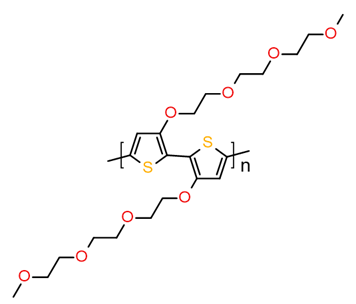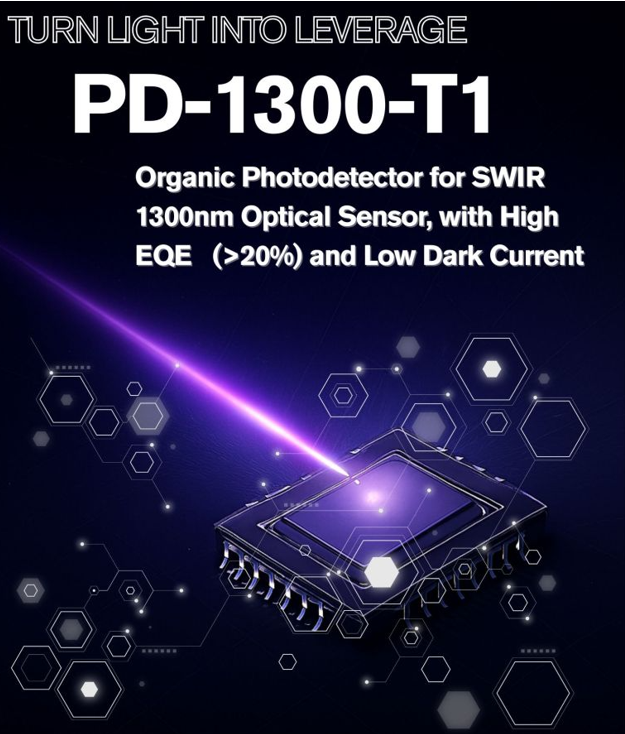
emerging material
SWIR-OPD, benchmark PD1300T1, extremely low dark current and high detectivity
Thanksgiving release: PD1300T1, new benchmarking polymeric donor for SWIR-OPD with peak sensitivity approaches 1300nm, extremely low dark current and high detectivity.
To learn more, please click the link below:
OMIEC, organic mixed ionic-electronic conductors for energy storage, electrochromic displays, bioelectronics, sensors, electrocatalysis, neuromorphic devices, thermoelectrics, and actuators
Mixed ionic-electronic conductors, also known as mixed conductors, are an increasingly important category of materials with applications in energy storage, electrochromic displays, bioelectronics, sensors, electrocatalysis, neuromorphic devices, thermoelectrics, and actuators.
Mixed conductors exhibit both ion and electron/hole conductivity, and ionic-electronic coupling (i.e., capacitance), allowing them to effectively transduce ionic signals to electronic ones, and vice versa.
In recent years, new mixed conductors have been developed beyond the traditional metals oxides and phosphates to include (semi)conducting polymers, radical polymers, perovskites, and hybrid organic-inorganic materials, enabling improved performance and new functionalities.
Structured below are examples of polymeric mixed conductors from 1-Material Inc.
Polybenzimidazole PBI2, PBI1 CAS 25928-81-8
(From Copilot) Polybenzimidazole (PBI) is a high-performance polymer with exceptional thermal, chemical, and mechanical stability. Its unique properties make it suitable for various industrial applications, including:
- Protective Clothing: Used in firefighter gear, astronaut suits, and welders’ apparel due to its non-flammability and high-temperature resistance.
- Aerospace and Automotive: Ideal for components in aircraft engines and automotive insulation pads, gaskets, and seals.
- Chemical Processing: Resistant to corrosive substances, making it valuable in industries dealing with acids, bases, and solvents.
- Semiconductor Manufacturing: Utilized in vacuum chamber applications due to its cleanliness and resistance to outgassing.
- Ultrasonic Equipment: Suitable for probe-tip lenses in ultrasonic measurement devices.
Research has continued to develop other forms of PBI. Here we make this engineering plastic solution processible, so you can explore its applications by coating and printing.
SWIR detector small-molecule acceptor CO8-X-1M to replace ATT-X-Fin ATT-X-1M NIR1700
SWIR small molecules with a spectral coverage of 700 to 1800 nm peaking beyond 1200 nm: CO8-X-1M and its derivatives, click the link below for more information.





